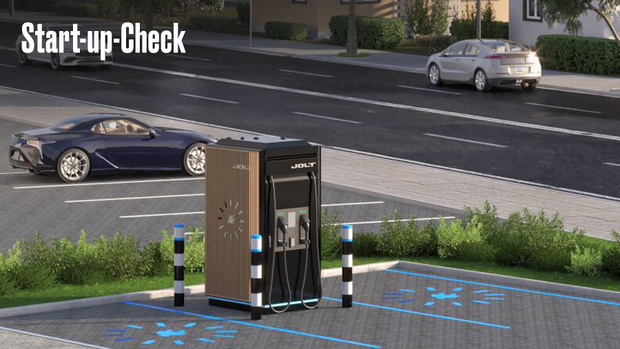Munich Sometimes it takes years to lay a high-performance line for a new charging station. The Munich founder Maurice Neligan wants to solve the problem with his start-up Jolt Energy. The experienced car manager relies on charging stations that can be connected to the existing power grid without any further effort.
With the systems, electric vehicles should still be charged within a few minutes. This is possible because the charging stations are equipped with battery storage. The concept convinces investors. The 56-year-old founder is about to collect a low three-digit million amount from an international infrastructure investor.
Goodbye combustion engines: more and more electric cars are on the road. However, not all owners can charge their vehicles in their garage at home or in the company. So public charging stations are needed – and Neligan wants to set them up en masse with his start-up Jolt Energy. The entrepreneur focuses on big cities. There is a lot of demand there, but at the same time it is particularly difficult to set up charging stations.
How do Jolt Energy charging stations work?
Jolt Energy charging stations are connected to a battery. This has two advantages. First: A conventional low-voltage connection is sufficient to install the charging point. This saves time and money compared to conventional fast charging stations, for which the grid connection has to be upgraded. Second: Vehicles can be charged in a short time.
Founder Neligan obtains the charging stations from the electronics specialist ADS-Tec Energy. The Swabian company was nominated for the German Future Prize last year. “The electricity can be drawn continuously from the grid,” says Managing Director Thomas Speidel, explaining the principle. It either flows directly into the car or proportionally into the internal battery of the charging station.
Because of the short charging time of ten to 20 minutes, the gas stations are very popular, according to Speidel: “40 charging processes per day are now a reality at highly frequented Jolt stations.”
Who is behind this?
“I was working in the automotive industry in Germany when the diesel scandal became known. That’s when it became clear to me that the end of the combustion engine had come,” says founder Neligan, explaining his personal motivation for entering the electromobility business. Born in Ireland, he spent most of his career at large corporations, including Siemens, Continental and VW.
This experience cannot hurt, because the requirements of his business are diverse. Jolt Energy selects the locations for the charging stations, builds the systems and also operates them. The property owners share in the economic success – through rent or through a share in sales.
The founder of Jolt Energy has a lot of experience in the auto industry.
(Photo: Jolt Energy)
The right location is extremely important, because a charging location can cost several hundred thousand euros. In addition: “We will buy electricity at daily changing prices, which makes the business complex,” says Neligan. In addition, he tries to market advertising space on the charging stations and thus open up an additional source of income.
What are the chances of Jolt Energy?
Experts consider the concept promising. “With the Jolt approach, the number of charging points can be expanded more quickly than with the otherwise necessary high installation effort,” says Professor Werner Tillmetz from the University of Ulm. “That helps the many e-car drivers who have no way to charge at home.”
According to the electrochemist, today’s power grid is not designed in many locations for the performance that drivers of electric cars want for charging. Tillmetz: “With the buffer storage we could save a large part of the costs for the network expansion.”
However, Jolt is not the only young company offering charging stations with battery storage. The start-up Numbat from Kempten is planning thousands of such charging stations in front of supermarkets. Adaptive Balancing Power from Pfungstadt, on the other hand, offers a solution with high-performance flywheel mass accumulators. This should also enable fast charging without costly network expansion.
What’s next?
According to Jolt Energy, it currently operates 40 charging points in German cities. In a year and a half it should be 1000 across Europe. At the same time, the entrepreneur wants to increase his team from 35 today to 140 by the end of next year. In the medium term, Neligan wants to raise half a billion euros from investors in order to expand the business internationally.
Will the expansion course succeed? This is ultimately decided in the official offices. It is true that the streets and sidewalks do not have to be torn open for the Jolt Energy charging stations. Nevertheless, the entrepreneur struggles with bureaucracy. “The crux of the matter are the municipal utilities and energy suppliers. Sometimes we have to wait a very long time for the low-voltage grid connections,” says Neligan.
More: More start-up checks can be found here
